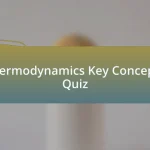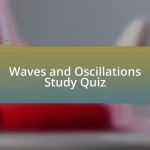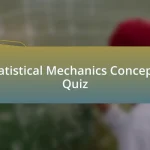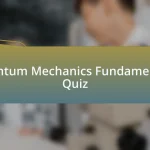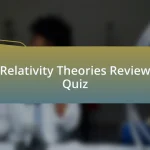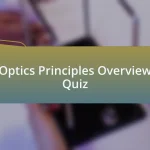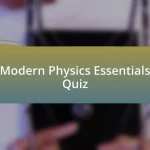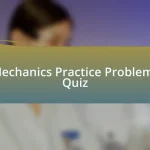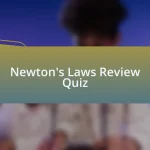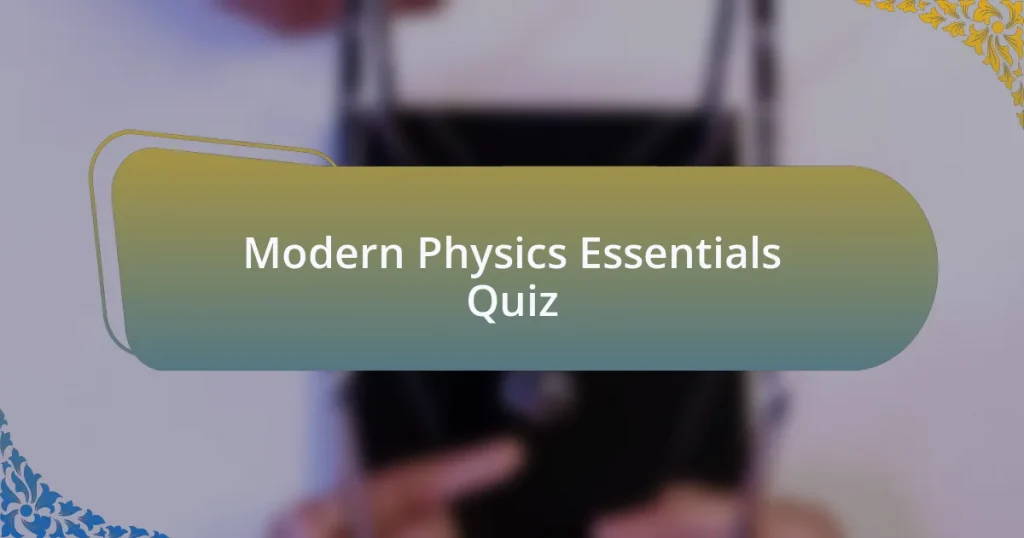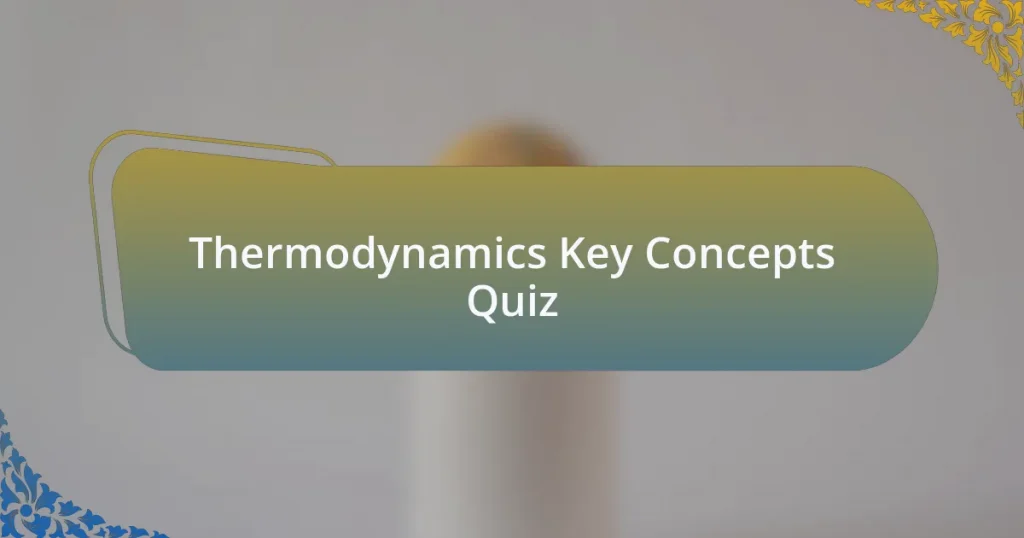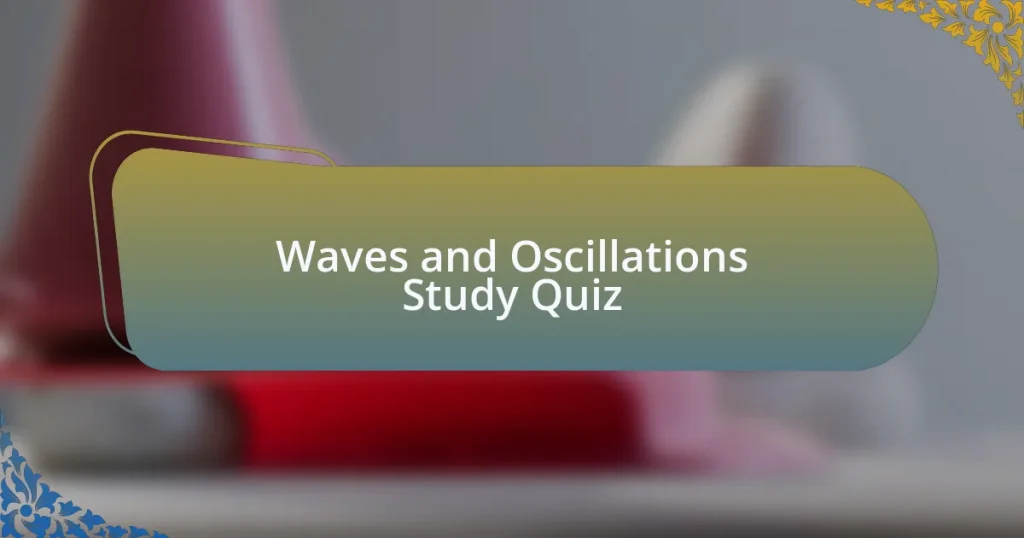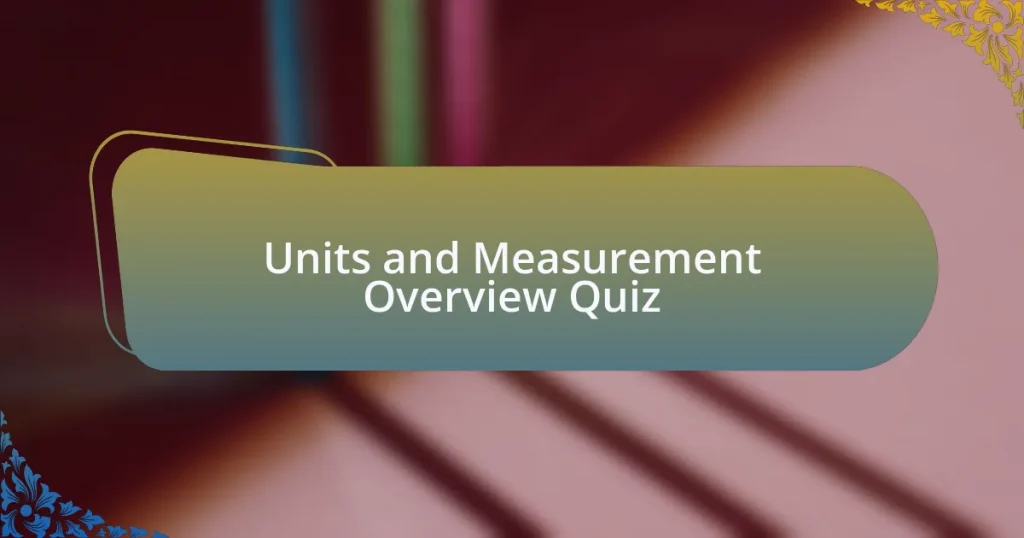Start of Modern Physics Essentials Quiz
1. What is the speed of light in a vacuum?
- 500,000,000 m/s
- 150,000,000 m/s
- 299,792,458 m/s
- 300,000,000 m/s
2. What is the concept of wave-particle duality?
- The ability of particles to exhibit both wave-like and particle-like properties.
- The principle that states energy cannot be created or destroyed.
- The concept that all matter is composed of indivisible atoms.
- The idea that objects move in straight lines at constant speeds.
3. Who is credited with the development of quantum mechanics?
- Albert Einstein
- Max Planck
- Niels Bohr
- Louis de Broglie
4. What is the Heisenberg Uncertainty Principle?
- The belief that particles can exist in more than one place at a time without measurement.
- The principle that it is impossible to know both the position and momentum of a particle with infinite precision.
- The idea that the speed of light can vary based on particle momentum.
- The concept that all particles collide with one another perfectly without any uncertainty.
5. What is the concept of relativity?
- The assertion that gravity is a force acting at a distance.
- The theory that the laws of physics are the same for all observers in uniform motion relative to one another.
- The idea that time travels at a constant rate for everyone everywhere.
- The principle that energy is always conserved in closed systems.
6. Who developed the theory of relativity?
- Niels Bohr
- Isaac Newton
- Galileo Galilei
- Albert Einstein
7. What is the difference between special and general relativity?
- Special relativity focuses only on light; general relativity only concerns space.
- Special relativity is about quantum mechanics and general relativity is about thermodynamics.
- Special relativity applies to circular motion; general relativity applies to linear motion.
- Special relativity deals with objects moving at constant speeds, while general relativity deals with objects in gravitational fields.
8. What is the photoelectric effect?
- The interaction of light with matter creating heat.
- The emission of light when atoms are energized.
- The phenomenon where light hitting a metal surface can cause electrons to be emitted.
- The process of atoms splitting to release energy.
9. Who discovered the photoelectric effect?
- Niels Bohr
- Erwin Schrödinger
- Albert Einstein
- Max Planck
10. What is the Compton effect?
- The reflection of light off a surface causing changes in color.
- The scattering of light by free electrons, resulting in a change in wavelength.
- The emission of light from a heated object, producing a continuous spectrum.
- The absorption of light by electrons, which increases their energy.
11. What is the concept of blackbody radiation?
- The reflection of radiation from a surface.
- The heat transferred through conduction in solids.
- The absorption of light by a cold object.
- The radiation emitted by an object at thermal equilibrium.
12. Who developed the theory of blackbody radiation?
- Louis de Broglie
- Max Planck
- Albert Einstein
- Niels Bohr
13. What is the Planck constant?
- A principle that describes the motion of planets in orbit.
- A variable that defines the speed of sound in a medium.
- A law stating that energy is conserved in all physical processes.
- A fundamental constant in quantum mechanics, approximately equal to 6.626 × 10^-34 J s.
14. What is the Bohr model of the atom?
- A model that depicts atoms as solid spheres without structure.
- A model suggesting electrons have no defined paths or energy levels.
- A model of the atom where electrons occupy specific energy levels or shells around the nucleus.
- A model where electrons are randomly distributed throughout the atom.
15. Who developed the Bohr model of the atom?
- Max Planck
- Albert Einstein
- Niels Bohr
- Wolfgang Pauli
16. What is the concept of electron spin?
- The position of an electron in an atom.
- The intrinsic angular momentum of an electron.
- The electric charge of an electron.
- The speed of an electron in an atom.
17. What is the Pauli exclusion principle?
- The principle that all electrons in an atom must have unique velocities.
- The principle that electrons must have opposite spins in the same orbital.
- The principle that electrons cannot occupy the same energy level.
- The principle that no two electrons in an atom can have the same set of quantum numbers.
18. Who developed the Pauli exclusion principle?
- Niels Bohr
- Max Planck
- Albert Einstein
- Wolfgang Pauli
19. What is the concept of wave functions in quantum mechanics?
- Geometrical shapes that outline particle positions.
- Constants used to calculate energy levels only.
- Functions that represent classical trajectory paths.
- Mathematical functions that describe the quantum state of a system.
20. Who developed the concept of wave functions?
- Erwin Schrödinger
- Albert Einstein
- Niels Bohr
- Max Planck
21. What is the Schrödinger equation?
- A statistical model predicting particle collisions.
- A partial differential equation that describes the time-evolution of a quantum system.
- A classical equation describing motion in fluids.
- A quantum state that defines the position of a particle.
22. What is the concept of superposition in quantum mechanics?
- The idea that particles do not interact with each other at all.
- The ability of a quantum system to exist in multiple states simultaneously.
- The principle that energy is quantized in discrete levels.
- The observation that particles can only exist in a single state.
23. What is the concept of entanglement in quantum mechanics?
- The principle that it is impossible to know both the position and momentum of a particle with infinite precision.
- The scattering of light by free electrons, resulting in a change in wavelength.
- The ability of a particle to exist in multiple states simultaneously.
- The phenomenon where two or more particles become correlated in such a way that the state of one particle cannot be described independently of the others.
24. What is the concept of quantum tunneling?
- The law stating that objects in motion stay in motion.
- The phenomenon where particles can pass through potential energy barriers.
- The theory that describes electromagnetic waves.
- The principle that energy cannot be created or destroyed.
25. What is the concept of spacetime in modern physics?
- The fabric that combines space and time.
- A method to measure gravitational pull.
- A force that separates matter and energy.
- The energy release during nuclear reactions.
26. What is the concept of gravitational waves in modern physics?
- Ripples in spacetime produced by massive accelerating objects.
- Disturbances in gravitational force only near black holes.
- Oscillations of energy fields in electromagnetic waves.
- Waves that travel faster than light in a vacuum.
27. What is the concept of dark matter in modern physics?
- A form of matter that glows in the dark and can be seen.
- A type of energy that causes cosmic expansion and is detectable.
- A particle that travels faster than the speed of light and is visible.
- A form of matter that does not emit, absorb, or reflect light and is thus invisible.
28. What is the concept of dark energy in modern physics?
- A type of radiation emitted by dark objects in space.
- An unseen force that pulls objects toward each other.
- A variant of matter that can absorb light.
- A mysterious form of energy thought to be responsible for the accelerating expansion of the universe.
29. What is the concept of quantum computing in modern physics?
- The application of classical mechanics to enhance computer processing speed.
- The use of quantum-mechanical phenomena such as superposition and entanglement to perform computations.
- The process of using chemical reactions to create energy-efficient processors.
- The technique of microwave communications for faster data transfer.
30. What is the concept of quantum cryptography in modern physics?
- The use of quantum mechanics to encode and decode messages in a way that is theoretically unbreakable.
- A way to create random numbers for cryptographic purposes using physical processes.
- A method to transmit classical information over long distances without errors.
- The technique of encrypting data using traditional algorithms for security.
Congratulations! You’ve Completed the Quiz
Well done on completing the quiz on ‘Modern Physics Essentials’! Engaging with this material has likely deepened your understanding of core concepts in physics. From relativity to quantum mechanics, you’ve touched on ideas that shape our understanding of the universe. Each question was designed to enhance your grasp of these critical topics, and we hope you found it both challenging and enlightening.
Throughout the quiz, you may have learned about the fundamental principles that govern the behavior of matter and energy. The exploration of key concepts like energy conservation, wave-particle duality, and the structure of atoms is essential for anyone looking to excel in physics. Reflect on what you’ve learned, and consider how these principles apply not just in theory but in the everyday world around you.
We invite you to continue your journey in mastering physics by checking out the next section of this page on ‘Modern Physics Essentials.’ This resource is designed to further enrich your knowledge. Here, you’ll find in-depth explanations and examples that will sharpen your understanding. Dive in and continue to explore the fascinating world of modern physics!
Modern Physics Essentials
Introduction to Modern Physics
Modern physics encompasses concepts that emerged primarily in the 20th century. It explores theories such as relativity and quantum mechanics. These theories challenge classical physics principles, providing new insights into the nature of time, space, and matter. Mastery of these concepts is crucial for test preparation, as they are fundamental to understanding advanced physical phenomena.
Key Principles of Quantum Mechanics
Quantum mechanics is a core aspect of modern physics dealing with subatomic particles. It introduces principles like wave-particle duality and the uncertainty principle. These concepts disrupt classical intuitions about the behavior of matter and energy. For test preparation, understanding the mathematical formulations, such as wave functions and operators, is essential, as they frequently appear in exam questions.
The Theory of Relativity
The theory of relativity, including special and general relativity, reformulates our understanding of gravity and motion. Special relativity focuses on the physics of objects moving at high speeds, while general relativity explains gravity as the curvature of spacetime. Key equations, such as E=mc², demonstrate the mass-energy equivalence. Familiarity with these concepts is vital for physics tests, as they often relate to real-world applications.
Applications of Modern Physics in Technology
Modern physics underpins many technologies, including semiconductors and lasers. Quantum mechanics drives advancements in computer science, particularly in quantum computing. Understanding how these principles translate into practical applications can enhance problem-solving skills for physics tests, where real-world scenarios may be presented.
Modern Physics Problem Solving Techniques
Effective problem-solving in modern physics requires a strong grasp of both theoretical concepts and mathematical techniques. Approaches such as dimensional analysis, energy conservation, and vector analysis are crucial. Students should practice solving a variety of problems to become proficient, as this is a common format in assessments. Familiarity with past exam questions can also provide insight into typical problem-solving expectations.
What are the key concepts of modern physics essential for test preparation?
The key concepts of modern physics essential for test preparation include quantum mechanics, relativity, and particle physics. Quantum mechanics explains the behavior of particles on the atomic scale. It introduces principles like wave-particle duality and uncertainty. Relativity, developed by Einstein, modifies classical mechanics by addressing high-speed motion and gravitational effects. This includes concepts like time dilation and space-time curvature. Particle physics studies elementary particles and their interactions, utilizing theories such as the Standard Model. Mastery of these topics is crucial, as they form the basis for many physics examinations.
How can students effectively study modern physics for tests?
Students can effectively study modern physics for tests by utilizing a structured approach. This involves reviewing fundamental concepts through textbooks and lecture notes, solving practice problems, and conducting experiments if possible. Representations such as graphs and simulations can aid in visual understanding. Forming study groups allows for discussion and clarification of complex topics. Moreover, utilizing past exam papers helps familiarize students with question formats and time management strategies. Consistent review and active problem-solving techniques enhance retention and understanding.
Where can students find resources for modern physics test preparation?
Students can find resources for modern physics test preparation in various places. Online platforms such as Khan Academy and Coursera offer free courses. University libraries provide access to textbooks and academic papers. Websites like MIT OpenCourseWare present lecture notes and problem sets. Additionally, mobile apps for physics offer quizzes and flashcards for practice. YouTube channels dedicated to physics education, such as Veritasium, provide visual explanations and experiments. Utilizing these resources diversifies study methods and strengthens comprehension.
When should students begin their preparation for modern physics exams?
Students should begin their preparation for modern physics exams at least several months in advance. Starting early allows ample time to grasp complex theories and practice problem-solving skills. A recommended timeline includes studying basic concepts within the first month, progressing to problem sets the following month, and conducting thorough review sessions in the final months. Creating a study schedule that allocates time for each topic helps ensure comprehensive coverage before the exam date. Early preparation significantly reduces last-minute cramming and associated stress.
Who can assist students in preparing for modern physics tests?
Students can seek assistance from several resources while preparing for modern physics tests. Classroom teachers provide foundational knowledge and clarification on difficult concepts. Tutors, either private or through academic centers, can offer personalized help tailored to individual needs. Study groups composed of peers encourage collaborative learning and support. Online forums such as Physics Stack Exchange facilitate questions and discussions with knowledgeable contributors. Educational platforms also offer professional instructors for virtual tutoring sessions, enhancing the preparation process.
